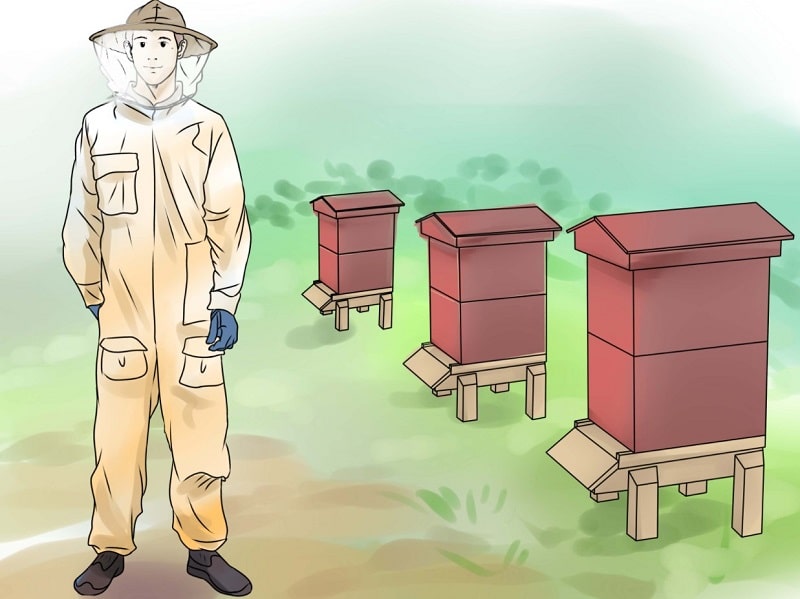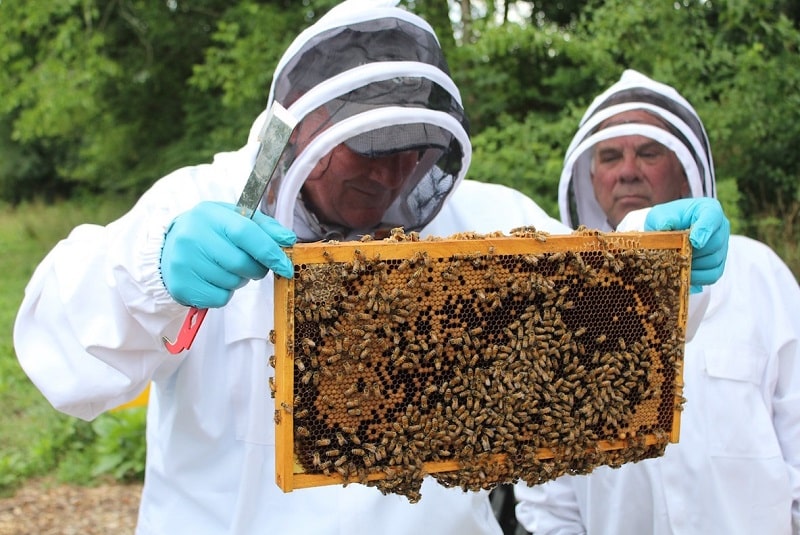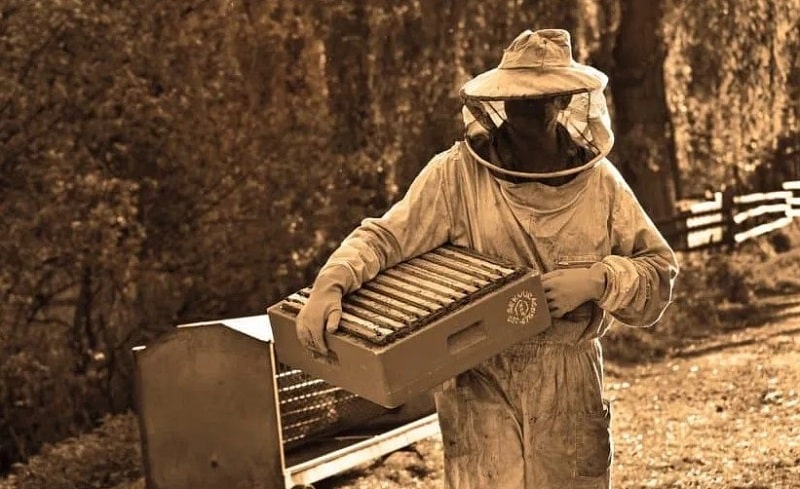When you see a beekeeper, he or she will most likely dress in a beekeeping uniform that includes heavy pants, a jacket, gloves, a hat and veil, and heavy boots. A beekeeping suit, along with a basic set of hand equipment, is one of the first items novice beekeepers purchase. Some old-timers may decide they don’t want to deal with the hassles of wearing a suit. But beginner beekeepers should wear appropriate protective clothing to protect themselves. However, have you ever wondered what are bee suits made of?

Materials for beekeeping suits
Beekeeping outfits appear to be a relatively modern invention. The ancient Egyptians purportedly raised bees without any kind of protective covering. The first instance of a specially tailored beekeeping costume appeared in sixteenth-century Europe.
Back ago, beekeepers wore wicker masks, with a single-piece garment that resembled a choir robe covering the rest of their bodies. The outfits were useless since the masks were impossible to see through and the robes still allowed large gaps for bees to enter.
The contemporary beekeeping suit is far superior to what beekeepers used in the past. So, what are the materials that make up quality protective clothing today?
-
Cotton
Cotton has been the go for fabric for hundreds of years. It is a thick, white substance that is difficult for bee stings to penetrate. Cotton’s biggest disadvantage is that it is not extremely breathable. In the heat of summer, a cotton suit can make you hotter. In all likelihood, you will be perspiring.
-
Nylon
Nylon for a beekeeping costume would have been unimaginable a few decades ago. It is too thin to provide any form of stinger defense. It does, however, have one benefit over cotton that makes it rather effective: bees find it difficult to grip it long enough to settle in and deliver a sting. They have a habit of slipping off before finishing the task.
Nylon, on the other hand, is even less breathable than cotton. That suggests it will be warmer. It also means that you will sweat more in a nylon suit. The icing on the cake is that nylon will stick to your skin because it does not absorb perspiration like cotton.
-
Mesh
Some current beekeeping costumes are comprised of multiple layers of mesh material. A single layer of mesh provides little protection from stings, but layering many pieces of mesh together makes a surface thick enough to repel most stingers.
Mesh has the obvious advantage of being breathable. The disadvantage of mesh is that it is more difficult to make a high-quality garment out of it. Mesh bee suits do not last as long. And the quality of protective suits is not always the same.

What a beekeeping suit includes
The suit’s primary body consists of pants and a jacket. Whereas these two components were once distinct, practically all new beekeeping suits are now one-piece. You are essentially purchasing a pair of thick, cotton coveralls with ankle and wrist gathers.
The hat and veil came next. The hat is worn on top of the head, and the veil hangs down from the brim and is tucked into the suit. Fasteners help hold everything together. They usually use a zipper or Velcro.
Finally, a beekeeping costume will finish with thick gloves and heavy work boots. The gloves are worn over the wrists and secured with Velcro or a strap and buckle. Boots are often tall enough to rise over the ankle.
Why is every beekeeping suit available for purchase on the retail market white?
Have you ever wondered why this is so? Dark hues, it turns out, excite bees. We don’t know why, but experts have long suspected that dark colors confuse bees. They may confuse a human clothed in dark clothing with a bear. Because bees and bears do not get along, such confusion is not good for the person.
Why wear bee suits?
A beekeeping suit can protect your head-to-ankle when you are tending to their hives. The fabric, which can be thick, thin, or multilayered, is designed to protect against bee stings. Elasticized cuffs and ankles prevent bees from entering. A hat and veil attached to the suit keeps bees from stinging the face and neck.
Types of beekeeping suits
- Full-length jumpsuit
This bee suit is designed to look like a loose-fitting coverall and covers the full body, from the neck to the wrists and ankles. It is held together by elastic, Velcro fasteners, and/or zippers. It could feature a built-in hood or zippers for attaching a veil or hood.
Look for a suit that is simple to put on and take off. This suit should have plenty of pockets for your tools, and loops over your thumbs to keep the sleeves from sliding up your arms.

- Jacket or smock
A beekeeping jacket resembles a parka and has a zipper closing. Beekeeping smocks are oversized sweatshirts that pull over the head. These garments are designed to be worn over your clothes and are easier to put on and take off than a full bodysuit. Many have a detachable hood and a veil fastened by a zipper.
Jackets often have plenty of pockets for your hive tools. If you opt for a jacket or smock, make sure that your pants are also white or light colored and bees can’t reach you at the ankle or waist.
Conclusion
So there you have it. Thick cotton fabric is the main material that makes up most beekeeping costumes. If you are new to this hobby, I recommend you invest in a set because you are worth to protecting. If you decide this outfit is no longer essentially a few years down the road, that is OK, but at the very least, wear protective clothes while getting to know your bees.
